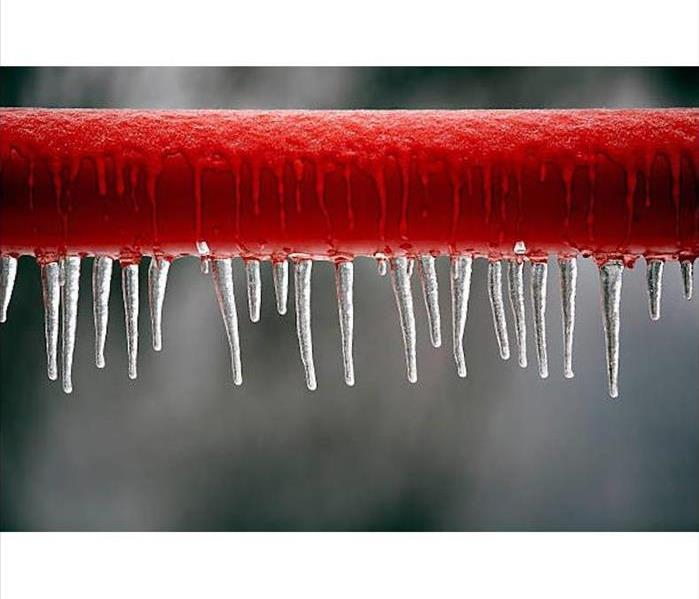How to Handle Frozen Pipes
12/26/2022 (Permalink)
At SERVPRO of Jefferson City, we often see an increase in water losses during the winter. A major culprit of these losses are frozen pipes.
When the water inside the pipes freeze, its molecules expand, which causes a blockage of ice that prevents unfrozen water from passing through. When the frozen pipe begins to thaw, the pressure from the water can cause the pipe to burst.
How Can I Tell My Pipes Are Frozen?
One of the most common signs that you are dealing with frozen pipes is when you turn on your faucet and no water comes out (similarly, if you flush your toilet and it doesn’t refill). If this happens, you should check your water source to make sure it’s still turned on and that a leak isn’t occurring.
Another tell-tale sign of frozen pipes is when your water line is coated in frost or is bulging.
If you know that your pipes are frozen, you can either choose to address the issue yourself or call in professionals.
How to Prevent Frozen Pipes
Frozen pipes cause an estimated $400-$500 million in damage annually. To avoid adding to that total, there are several steps you can take.
When the weather gets cold, you should drain water from pipes that are likely to freeze, such as sprinkler and swimming pool water supply lines. Outside hoses should also be disconnected and drained, and indoor valves supplying these access points must be closed.
On frigid days, let your faucets drip cold water. Having the water drip out will make it harder for the water in the pipes to freeze. Your thermostat should also be kept around the same temperature at all times, and your house temperature should never fall below 55 degrees. Garage doors should also be kept shut to protect water lines.
If you are worried about your pipes freezing, you can also place a 60-watt bulb in the areas you’re concerned with. Just make sure none of the materials near the bulb are combustible.
What If My Pipes Are Already Frozen?
If you realize your pipes have frozen, the first step is to keep your faucet open. This will help with thawing and allow for moving water to flow through the pipe.
You can also apply heat to the specific area of the pipe that is frozen. You can do this by wrapping an electronic heating pad around the pipe or heating the area with a hair dryer. Using towels soaked in hot water can help, too.
Keep applying heat until water flow returns to normal. After the pipe has been thawed, turn on other faucets around the house to make sure you don’t have any more frozen pipes.
If the pipe is inside an exterior wall, you should immediately call a professional contractor. It is likely that a hole will need to be cut in the wall toward the inside of the house to allow the pipes to be exposed to warmer air.
Frozen pipes can be a catastrophic problem for your home, but taking proactive measures can help you address the problem before it even starts.






 24/7 Emergency Service
24/7 Emergency Service
